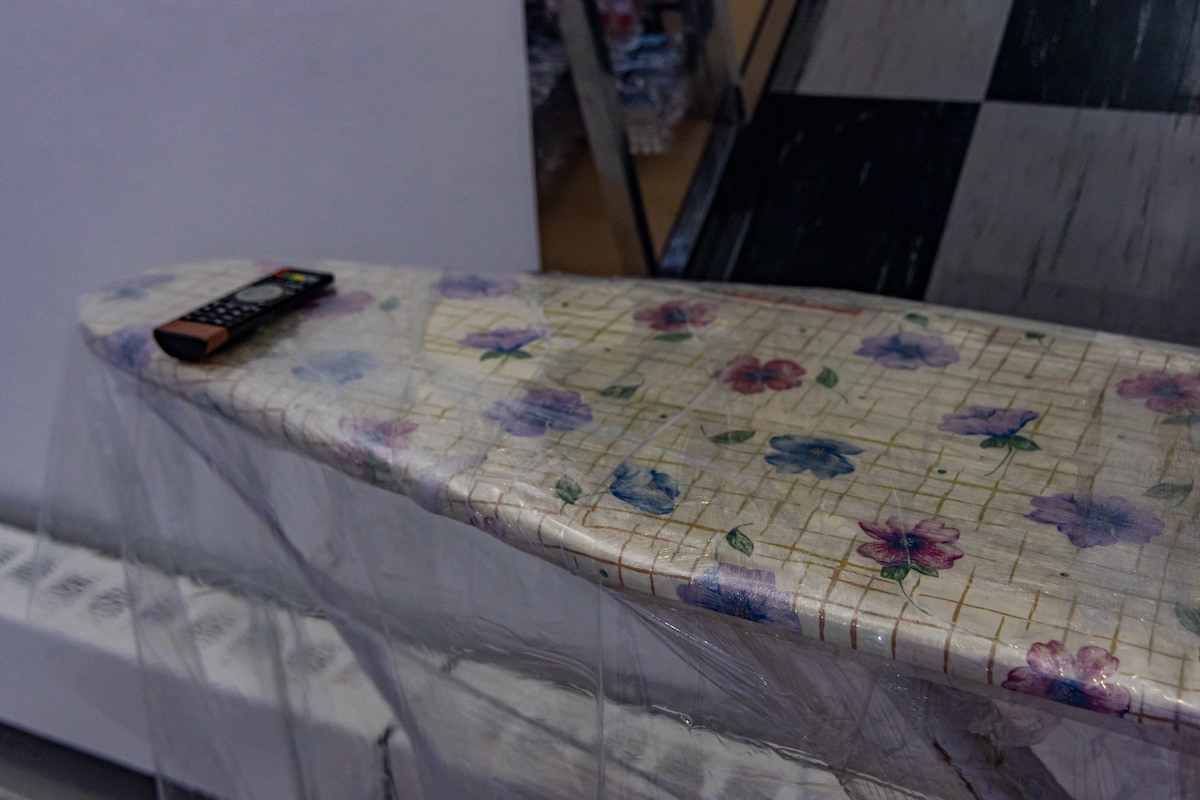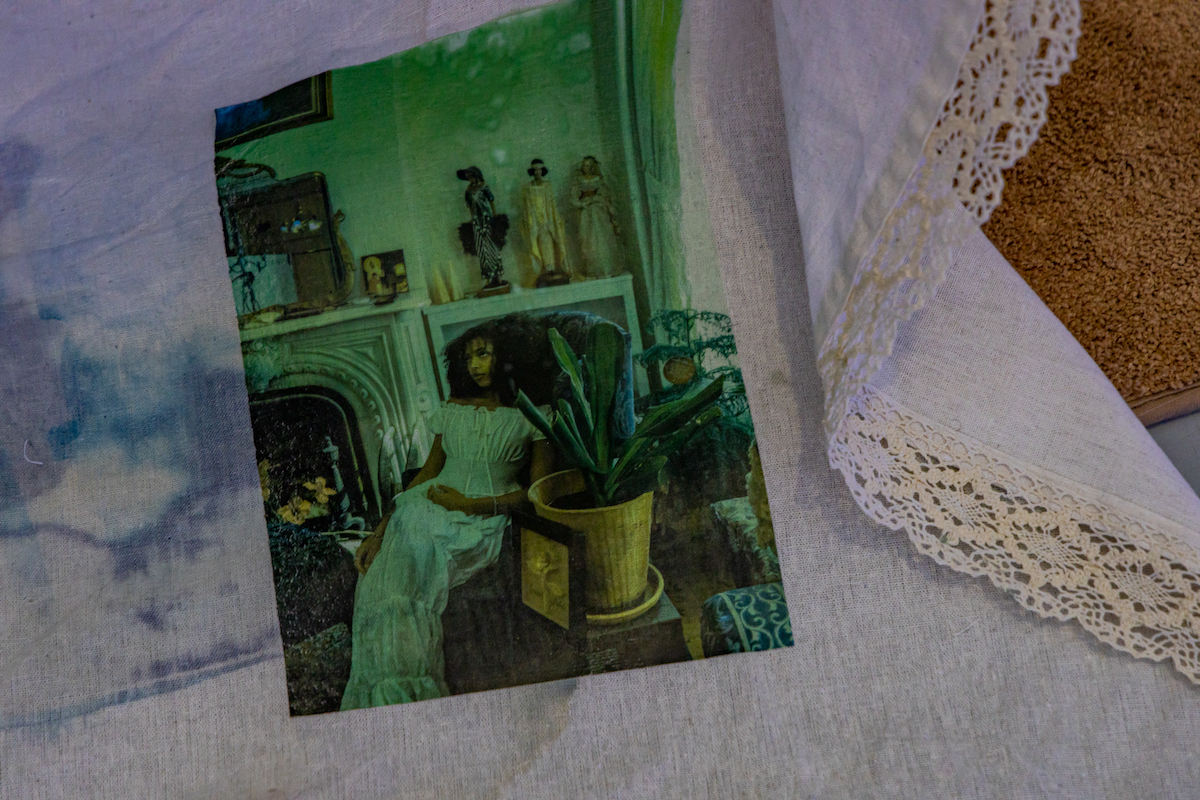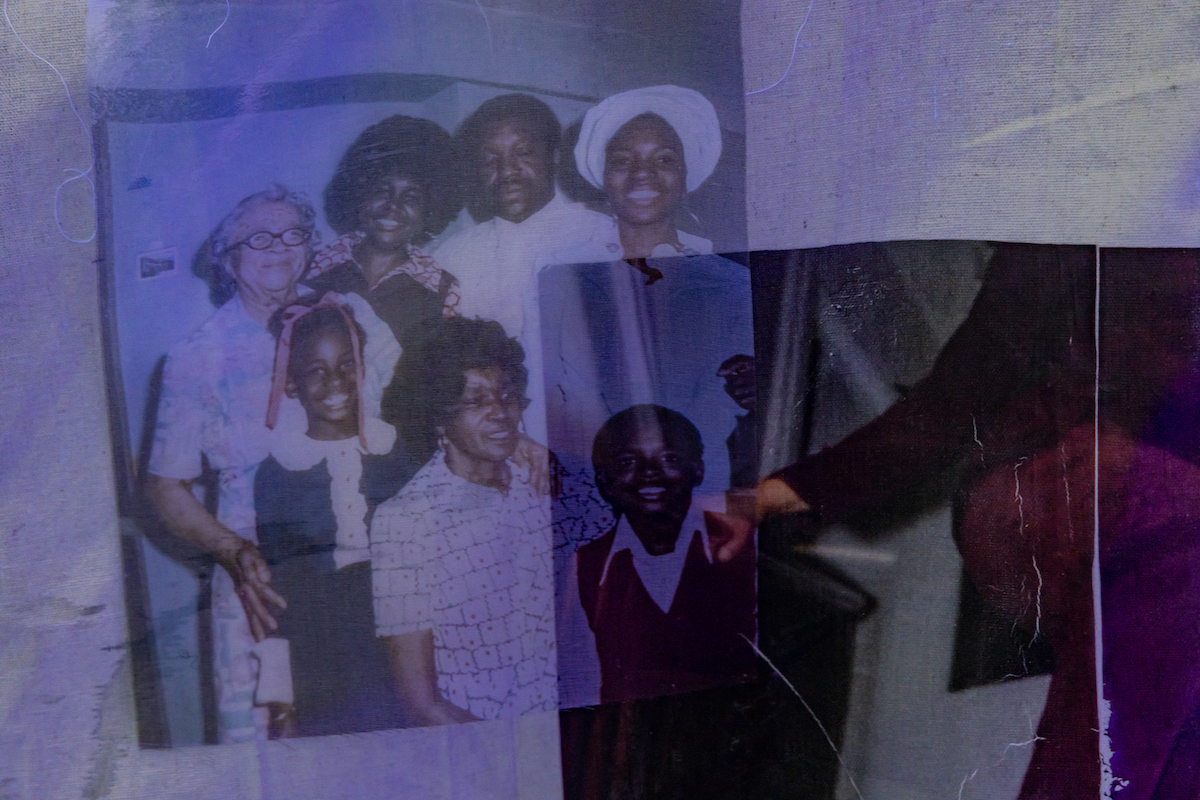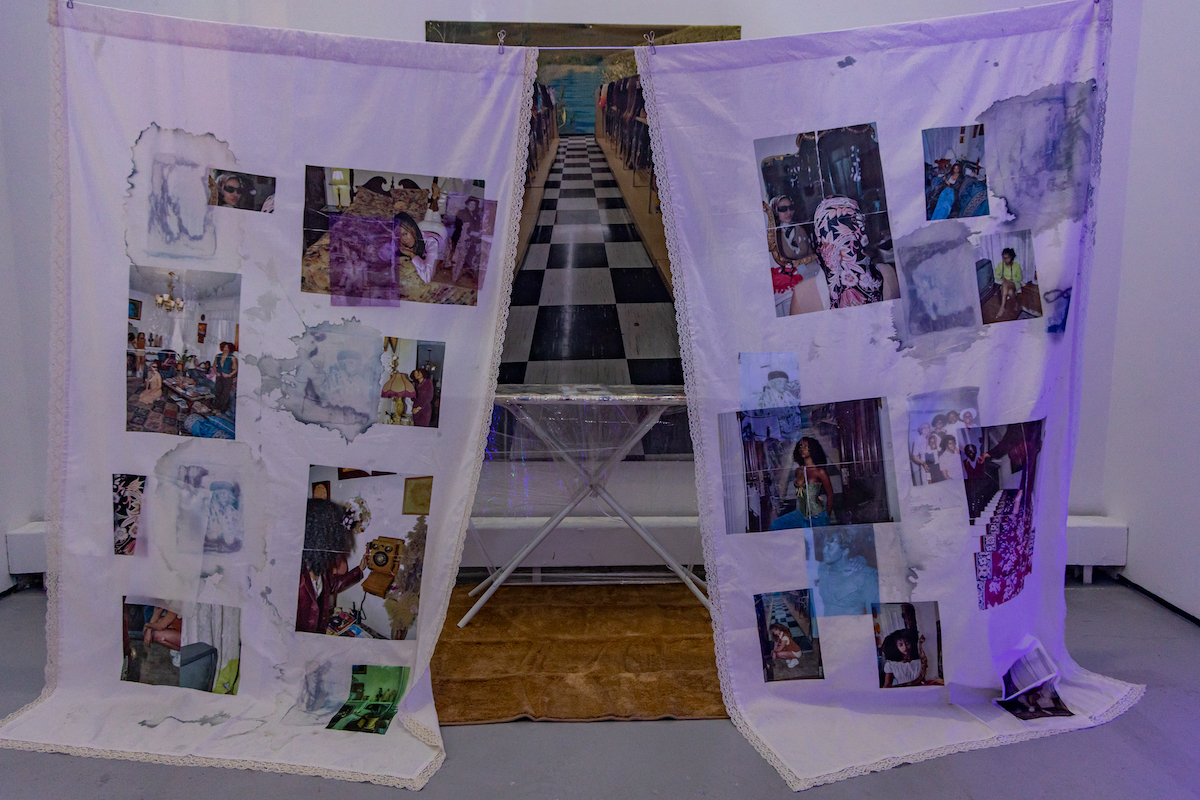Senior Thesis Exhibition 2022
Abeyaz Amir
Chia Amisola
Brice Bai
Merritt Barnwell
Onora Best
Maya Boateng
Ekow Buadu
Anne Chen
Mila Colizza
Alara Degirmenci
Ivory Fu
Pilar Galvan
Matt Herriot
Sidney Hirschman
Neo Khan
Daniel Kyungjae Lee
Sunnie Liu
Laura Padilla Castellanos
Anya Pertel
Sarah Saltzman
Sol Thompson
Julie Tran
Aliaksandra Tucha
Sofia Turner
Xavier
Jieun Yu
Senior Thesis Exhibition 2022
Abeyaz Amir
Chia Amisola
Brice Bai
Merritt Barnwell
Onora Best
Maya Boateng
Ekow Buadu
Anne Chen
Mila Colizza
Alara Degirmenci
Ivory Fu
Pilar Galvan
Matt Herriot
Sidney Hirschman
Neo Khan
Daniel Kyungjae Lee
Sunnie Liu
Laura Padilla Castellanos
Anya Pertel
Sarah Saltzman
Sol Thompson
Julie Tran
Aliaksandra Tucha
Sofia Turner
Xavier
Jieun Yu
Pilar Galvan
Statement Walking through my grandmother's house was like entering a portal. There was a wall tiled in mirrors, tables with plastic tablecloths, wigs hanging from a shoe rack, an old wooden console piano, a living room carpeted in sandy beige and a kitchen with black and white tile floors. A display cabinet of untouched china lined the dining room wall, Folgers coffee and cans of Canada Dry were piled amongst scrabble, and dried floral arrangements filled every vase. This was my wonderland, a reality that felt like a dream. I wanted to recreate that space in my work. I found a home that was reminiscent of that space and invited a group of six women who I barely knew to come together in a “Historic Mansion” in New Haven. The mansion is owned by an elderly Italian couple, the wife is an artist and dollmaker and the house is adorned with her work. The space had a charmingly eclectic aesthetic just like that of my grandmother's home. The space was characterized by a twinge of faux extravagance, fake flowers, thick patterned armchairs, and ornate carpeting and light fixtures. I wanted the space to be a retreat for the women I included. I chose to photograph them as themselves, wearing thrifted and vintage attire from a slew of decades, exploring the space. The piece revolves around this Black domestic space and how Black women protect and perform within it. Whether it be by covering furniture in plastic or putting thrift store table ware in glass casing. These practices are metaphors for the way Black women move through the world. Beyond that there are symbols of their ingenuity. Both the ironing board (the one in the piece is my mother’s and is worn with age) and the clothing line (which holds the colonial style curtains setting the stage) were invented by Black women. Their contributions to society are embedded in the home and forms of expression. Layered under and onto the images of these women within this space are archival images of the women in my mothers family. I use cyanotype to create a sort of afterimage of my great grandmother whom I am named after. I believe that her legacy lives on within me. The bleeding and imperfection of the print further illustrates the tension of striving for an ideal (hard edges of the transferred images) but finding rarity in uninhibited expression. The sense of escape into this expression is emphasized by the image of the beauty supply store leading into an oasis. Which is overlaid with a video of the women who were in the shoot walking down/towards the aisle and disappearing. The audio which plays subverts the white fragility which is weaponized against Black women in order to prevent them from claiming their femininity. The women recite and reconstruct interviews that were conducted with white women (predominantly those in sororities) on how they see themselves. In doing so, the Black women who were featured subvert and reclaim space which despite their influence seems to never have had space for them
Student

films, black woman, reading, identity, women, grandmother, fantasy, part, interested, ironing board, russian, space, feel, fragility, reflecting, younger, subversion, black, mother, experienced
"So my piece is going to be on like black domesticity and the black household and black womanhood within the household. So particularly thinking about memories I've had, as a child at my grandmother's house, which was like, eventually flooded. And we lost kind of everything in the flood. Except for photos that we had in our own house. And so I still have like, kind of pieces of that and memories of when I was younger, or in my grandmother's house."
"I was thinking about, kind of, the way that black women invent and create things, but then kind of fall behind in being acknowledged for things that they create."
"And this ironing board was actually my grandmother's, and then it was my mother's and it was always something that I saw in my apartment growing up. And then it's interesting, because I feel like it's also a symbol, at least for my family, of socio economics because we, my family, as we rose in socioeconomic status we didn't use that ironing board anymore. And we kind of went to the dry cleaners. And so this iron board has aged throughout time."
"I am a film buff and I love Jordan Peel's films, I'm always interested in horror, but Fantasy has been where my interest in film began. And so I'm interested in subverting those narratives through fantasy instead of horror and making it more have something that's mystical and magical. "
"I've been reading a lot about, like, you know, fantasy novels that mostly portrayed white women. And I've been thinking a lot about how I can subvert those and reading black poets, and then reflecting on the connections between those two things. So like Langston Hughes has been a big inspiration for what I've been thinking about for, for sort of that subversion. "





 I See Myself As A White Woman
I See Myself As A White Woman